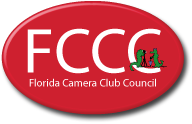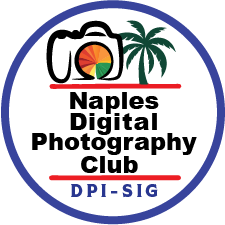Competition topics, info about winning images and the winners
DPI-SIG Competitions
DPI-SIG photography competitions are held 3 times annually, in January, April and August. The competition will generally include 4 photography categories:
A maximum of 3 entries per category, and a maximum of 4 entries per competition
Why Have Competitions?
- We get feedback on our work in a consistent way
- We see what other members are up to
- We see how to increase our skills (or, at least, what increased skills look like)
Here’s a video on how to enter

FCCC Competitions
Members in good standing of DPI-SIG are eligible to enter Florida Camera Club Council Competitions.
Click here to visit the FCCC competition page
Spring 2025 Competition
Competition Opens April 15 – Closes May 15 Judging will be 5/16 – 5/23
Enter Images Here for Spring 2025 Competition
Spring Special Category: Smartphone
Category Title: “Smartphone Photography: Creativity in Your Pocket”
Description: This category celebrates the art of photography captured exclusively with smartphones. From wide-angle landscapes to intimate portraits, this competition is all about harnessing the power of mobile technology to produce striking, creative images. Participants can utilize any smartphone to take their photos and are encouraged to explore unique compositions, lighting, and moments. Post-processing using apps on smartphones or computers is allowed, enabling participants to enhance their images and fully express their creative vision.
Suggestions for Participants:
- Exploration of Smartphone Features: Experiment with your smartphone’s native camera features like portrait mode, night mode, macro lens, or panorama. Push the boundaries of what your device can do!
- Lighting and Composition: Good lighting is crucial in photography, and smartphones offer many ways to play with natural and artificial light. Consider how you use shadows, reflections, and textures to elevate your shots.
- Post-Processing: While you can apply post-processing techniques through apps (such as Lightroom, Snapseed, VSCO, etc.), and ‘upscaling’ functions, make sure the final image remains true to your original vision and does not become over-edited.
- Unique Perspectives: Take advantage of the portability of smartphones. Capture unconventional angles or moments that are not typically seen with traditional cameras. The ability to shoot quickly and from unique perspectives often leads to unexpected and beautiful results.
Restrictions:
- Camera Equipment: Only smartphone cameras are allowed for image capture. No DSLRs, mirrorless cameras, Go Pros, “Action Cameras” or professional camera equipment are permitted.
- Image Manipulation: Excessive manipulation of images in post-processing (e.g., adding or removing elements that were not in the original frame) is discouraged. The focus should remain on the photographic composition rather than digital art.
- Stock Images: All photos must be original works created by the participant. Stock images or photographs not taken by the entrant are not eligible.
- No Watermarking: Entries should not include any watermarks, signatures, or branding on the image. Your photo should stand alone without additional markings.
- Respect for Privacy and Copyright: Ensure all subjects in your images have given consent if recognizable. Do not use copyrighted or proprietary content without permission.
Judging Criteria: Judges will evaluate the creativity, composition, use of light, and emotional impact of the photos. Post-processing quality and how well it complements the original image will also be considered.
Embrace the power of your smartphone to capture the world around you and show how modern photography has evolved with technology!
Submissions in this category are to be made initially with a Smart Phone.
Post processing is encouraged, either with smart phone apps or those available on computers.
It is advisable to use ‘upscaling’ available in many applications to produce higher resolution images.
Original images may be requested.
Artificial Intelligence: No portion of the image may be constructed through the use of Artificial Intelligence. See the reference to Artificial Intelligence in the General Rules for DPI-SIG Photo Competitions.
Competition General Rules
Any member in good standing may enter up to FOUR (4) images.
You may enter 4 images as long as they are not all entered into a single category. That is, up to THREE (3) images in any ne category and ONE (1) image in any other category, or any combination thereof.
You may change any image until the cutoff date has passed.
Any member in good standing of DPI-SIG shall be eligible to enter any DPI-SIG Competition.
No image that has previously received a ribbon in a DPI-IG competition may be re-entered in any future competition.
Entries into the annual Year-End Judging shall be limited to only images that have received an award during the season. They will be automatically entered.
Eligibility of entries will be confirmed by the Competition Director or designate prior to publication on the website and acceptance for judging. This may take a day or two. When confirmed, the image will be published on the Current Competition website. If an image is not confirmed, the photographer will be notified by email, and the image will be deleted from the website. The member may enter another image for consideration.
Only images that are totally the work of the individual photographer may be submitted. Work that is not completely your own is not allowed. Clip art and photographs obtained online or from other sources are not allowed.
Another person’s artwork, such as a painting, sculpture, street art, etc. may be included in an image as long as there is evidence that the maker used the artwork as only a part of their own image in an effort to tell a story or to create an interesting visual.
Images that are sexually suggestive beyond normally acceptable boundaries or sexually explicit are not allowed. Acceptance to the competition will be determined by the DPI-SIG Competition Director and Competition Committee, whose decision is final.
No portion of any image submitted to a DPI-SIG Photo Competition may be constructed through the use of Artificial Intelligence (ie.Firefly, Midjourney, Bing, Leonardo et al.)
Category Definitions
Traditional Color: Color images compete in this category, except for those in the Creative category. Any adjustment or enhancement is allowed while keeping the image’s appearance realistic and natural. High Dynamic Range (HDR) images are allowed as these images differ only by a greater range of luminosity, or dynamic range. Images in this category cannot appear obviously manipulated. The key to this category is to maintain an image’s natural appearance.
Traditional Mono: Monochromatic images, which are either completely desaturated or contain only a single-color tone (e.g. sepia, red, blue, etc.), are eligible for this category. Any adjustment or enhancement is allowed while keeping the image realistic. Naturally-appearing, High Dynamic Range (HDR) images are allowed, as these images differ only by exposure. Images in this category cannot be obviously manipulated, or they belong in Creative.
Creative: DPI-SIG defines a creative image as a color or monochromatic image that is “recognizably altered by manipulating a composite of more than one unique image or by an obvious change in natural color, form, shape or any combination of the three.†The original image, any alterations, and all incorporated elements must be created by the entrant. The original photographic content predominates and must be identifiable. However, the creative alteration must be apparent. Obvious High Dynamic Range (HDR) images are considered creative images. If any supplementary images are found to have been taken from another source belonging to someone else, the submitted image will be disqualified. The committee has the right to request the original images if questioned. The key to this category is that the image must appear obviously manipulated.
Exception – Infrared images are permitted in the Traditional Color and Monochrome categories, as long as they appear as ‘natural and realistic’ as possible, and meet the requirements otherwise for either category. Any submission of an obviouslymanipulated infrared image should be entered in the Creative category.
Theme: when so indicated, images will be accepted into a theme category. A descriptive specification for the theme will be included on the competition web page to provide guidance on creating or selecting theme images. Themes may be topical, such as “fog” or “silhouettes” or “pure Florida”, or may be technical, such as “high key / low key”. Unless otherwise noted in the theme specification, theme images may be color, monochrome or creative. As with other categories, entries in the theme category are limited to 3 entries.
